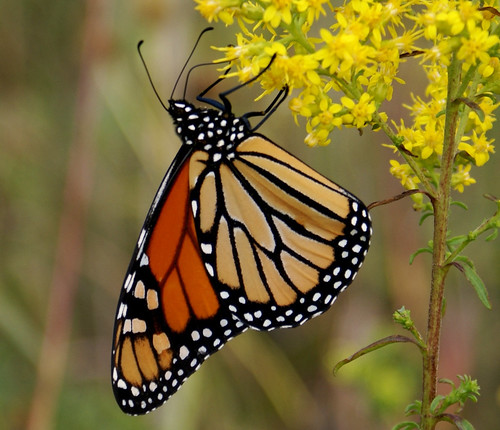Have you noticed lately that there are fewer insects scampering or buzzing around the University of Maryland campus?
Do you wonder where they go when the temperatures outside begin to dip? Well, in the fascinating world of insects, they have mastered numerous methods in which to survive the cold freezing temperatures in order to thrive and return when the weather warms up. Insects will overwinter for the most part in a stage of growth best adapted to the cold temperatures; that is, adult, larva, nymph, pupa, egg or even migrate to warmer climates.
 |
Adult BMSB
photo UMD Entomology |
The Brown Marmorated Stink Bug (BMSB),
Halyomorpha halys, Order: Pentatomidae overwinter as adults. You know, those stinky pests everyone has been talking about lately. They like to hunker down through the winter months like a hibernating bear in people's homes. To find out more about this insect go to
Stink Bug

An insect that will overwinter in the larval stage is the Japanese beetle,
Popillia japonica, Order: Coleoptera. The larval stage is the immature, wingless stage of an insect that does not look anything like the adult stage. The grub like larva will burrow deep into the soil where it is warmer. Go to
The Japanese beetle to discover more about this insect.
 |
Adult Mayfly
photo Nancy Harding, UMD |
Some species of mayflies; Order Ephemeroptera, will overwinter as nymphs; that is, the youth of an insect that resembles the adult more and more as it grows. There are not many insects that are active in the winter, but some mayflies will live in waters of ponds and streams, often beneath ice and feed actively all winter long to emerge in the early spring. Learn more about mayflies go to
Mayfly fact sheet.
There are other insects that overwinter in the pupal stage; that is, the non-feeding, transitional stage of an insect that will emerge from its shelter in the spring as an adult. The house-fly,
Musca domestica, Order: Diptera, is just one those insects and can overwinter under manure piles or other protective areas. Fly pupa is similar to a butterfly cocoon, it is a hard, brown shell which protects the developing fly. Learn more about
Flies.
 |
Wheel bug egg mass
photo UMD-IPMnet
|
 |
Wheel bug adult
photo UMD Entomology |
Fewer insects overwinter in the egg stage; however one such insect is the wheel bug (assassin bug)
Arilus cristatus, Order: Hemiptera. The wheel bug eggs are laid in tight, upright clusters normally found on bark. See more about the
Assassin bug.
 |
| NCRS photo Gene Barickman |
In my opinion, and I think others share my opinion, the most amazing insect is the Monarch butterfly; Danaus plexippus, Order: Lepidoptera. According to the United States Department of Agriculture website 'the annual migration of North America's monarch butterfly is a unique and amazing phenomenon. The monarch is the only butterfly known to make a two-way migration as birds do. Unlike other butterflies that can overwinter as larvae, pupae, or even as adults in some species, monarchs cannot survive the cold winters of northern climates. Using environmental cues, the monarchs know when it is time to travel south for the winter. Monarchs use a combination of air currents and thermals to travel long distances. Some fly as far as 3,000 miles to reach their winter home'.
Watch this video regarding the amazing Monarch Butterfly migration











